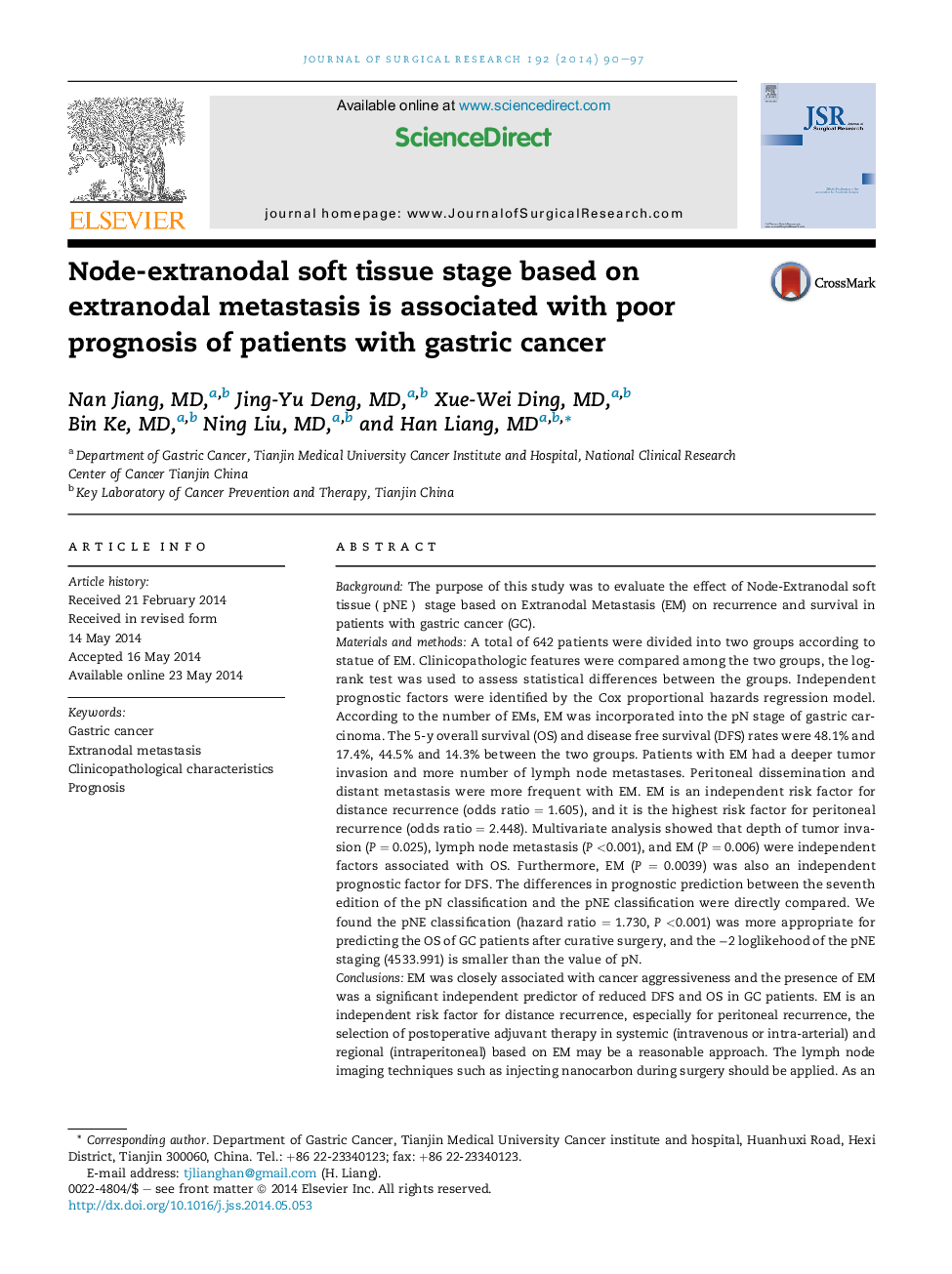| Article ID | Journal | Published Year | Pages | File Type |
|---|---|---|---|---|
| 4300069 | Journal of Surgical Research | 2014 | 8 Pages |
BackgroundThe purpose of this study was to evaluate the effect of Node-Extranodal soft tissue(pNE) stage based on Extranodal Metastasis (EM) on recurrence and survival in patients with gastric cancer (GC).Materials and methodsA total of 642 patients were divided into two groups according to statue of EM. Clinicopathologic features were compared among the two groups, the log-rank test was used to assess statistical differences between the groups. Independent prognostic factors were identified by the Cox proportional hazards regression model. According to the number of EMs, EM was incorporated into the pN stage of gastric carcinoma. The 5-y overall survival (OS) and disease free survival (DFS) rates were 48.1% and 17.4%, 44.5% and 14.3% between the two groups. Patients with EM had a deeper tumor invasion and more number of lymph node metastases. Peritoneal dissemination and distant metastasis were more frequent with EM. EM is an independent risk factor for distance recurrence (odds ratio = 1.605), and it is the highest risk factor for peritoneal recurrence (odds ratio = 2.448). Multivariate analysis showed that depth of tumor invasion (P = 0.025), lymph node metastasis (P <0.001), and EM (P = 0.006) were independent factors associated with OS. Furthermore, EM (P = 0.0039) was also an independent prognostic factor for DFS. The differences in prognostic prediction between the seventh edition of the pN classification and the pNE classification were directly compared. We found the pNE classification (hazard ratio = 1.730, P <0.001) was more appropriate for predicting the OS of GC patients after curative surgery, and the −2 loglikehood of the pNE staging (4533.991) is smaller than the value of pN.ConclusionsEM was closely associated with cancer aggressiveness and the presence of EM was a significant independent predictor of reduced DFS and OS in GC patients. EM is an independent risk factor for distance recurrence, especially for peritoneal recurrence, the selection of postoperative adjuvant therapy in systemic (intravenous or intra-arterial) and regional (intraperitoneal) based on EM may be a reasonable approach. The lymph node imaging techniques such as injecting nanocarbon during surgery should be applied. As an important prognostic factor, EM should be incorporated into N stage according to its number retrieved in postoperative samples.
